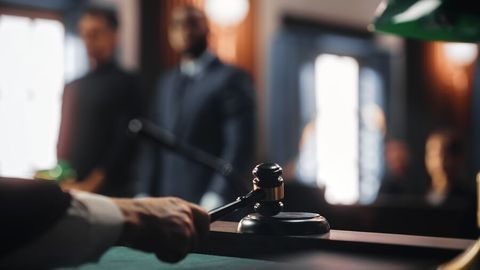Acid Claims Not Infringed By Partly Neutralized Acid
Client Alert | 1 min read | 03.30.06
In Kao Corp., et al. v. Unilever United States, Inc., et al. (No. 05-1036, -1049; March 21, 2006), a Federal Circuit panel affirms a trial court's holding that Kao's patent is valid and enforceable but not infringed. The trial court interpreted Kao's claim to cover the acid forms of a copolymer and to exclude the salt forms of the copolymer. This claim construction was based, in part, on Kao's filing of another application directed to the salt form. The trial court took this filing as evidence that the patent in suit did not cover salt forms of the copolymer.
Unilever's accused infringing product included the claimed copolymer, but it was partially neutralized into the salt form. Unilever argued that it uses the salt form of the copolymer, and the Federal Circuit panel determines that Kao failed to rebut this assertion, other than offering an unsupported conclusion that Unilever uses a slightly neutralized acid and not a salt. Addressing Kao's argument that even if Unilever uses a salt it still infringes the claims, the panel distinguishes cases where an acid claim was infringed by a salt because in those cases the claims included the salt. Judge Newman dissents, pointing out that neutralizing 14.5% of the acid groups in the copolymer does not yield a salt and also that the record supports Kao's argument that Unilever uses a slightly neutralized acid.
Insights
Client Alert | 6 min read | 11.26.25
From ‘Second’ to ‘First:’ Federal Circuit Tackles Obvious Claim Errors
Patent claims must be clear and definite, as they set the boundaries of the patentee’s rights. Occasionally, however, claim language contains errors, such as typographical mistakes or incorrect numbering. Courts possess very limited authority to correct such errors. The United States Court of Appeals for the Federal Circuit has emphasized that judicial correction is appropriate only in rare circumstances, where (1) the error is evident from the face of the patent, and (2) the proposed correction is the sole reasonable interpretation in view of the claim language, specification, and prosecution history. See Group One, Ltd. v. Hallmark Cards, Inc., 407 F.3d 1297, 1303 (Fed. Cir. 2005) and Novo Indus., L.P. v. Micro Molds Corp., 350 F.3d 1348, 1357 (Fed. Cir. 2003).
Client Alert | 5 min read | 11.26.25
Client Alert | 6 min read | 11.25.25
Brussels Court Clarifies the EU’s SPC Manufacturing Waiver Regulation Rules
Client Alert | 3 min read | 11.24.25


